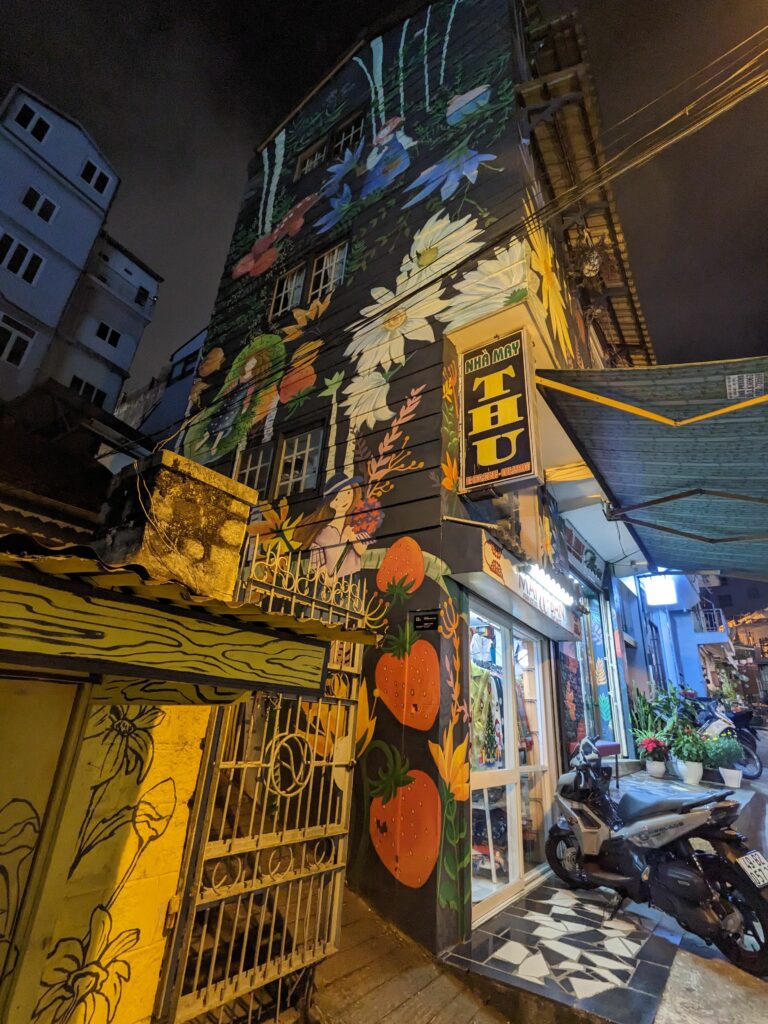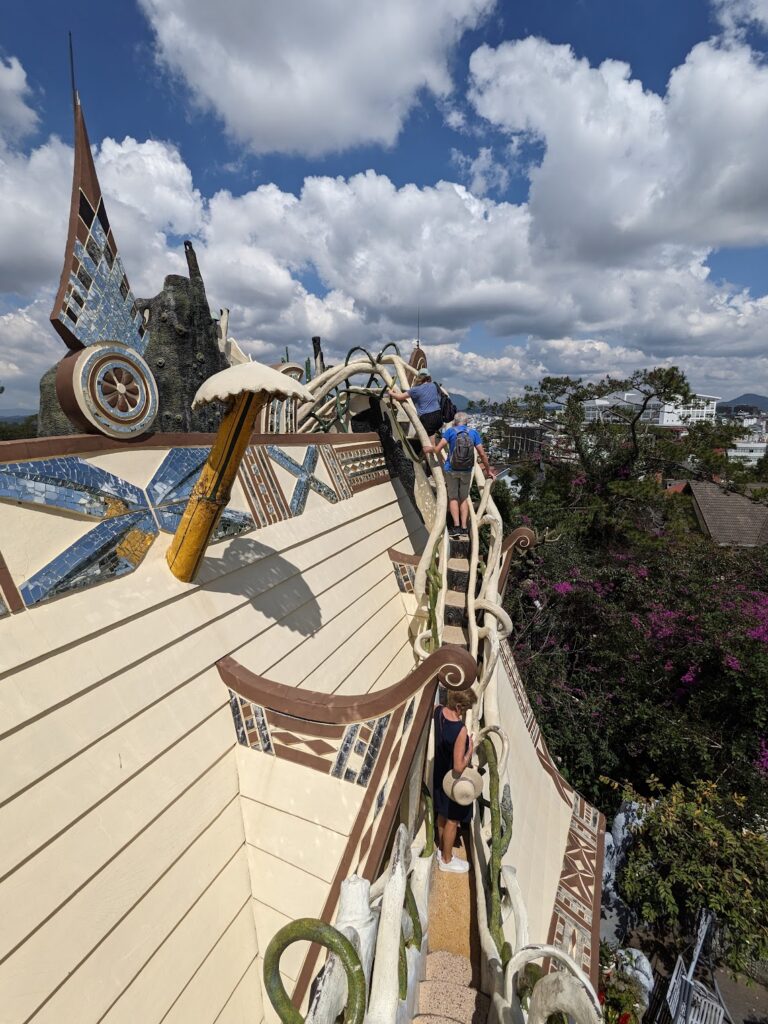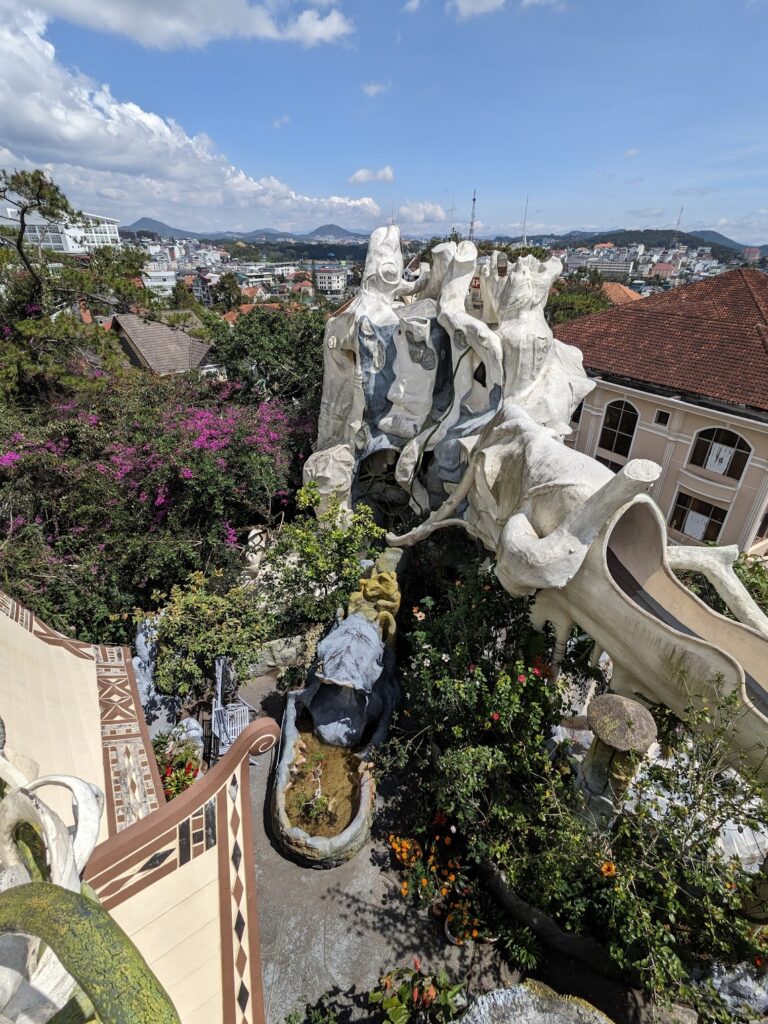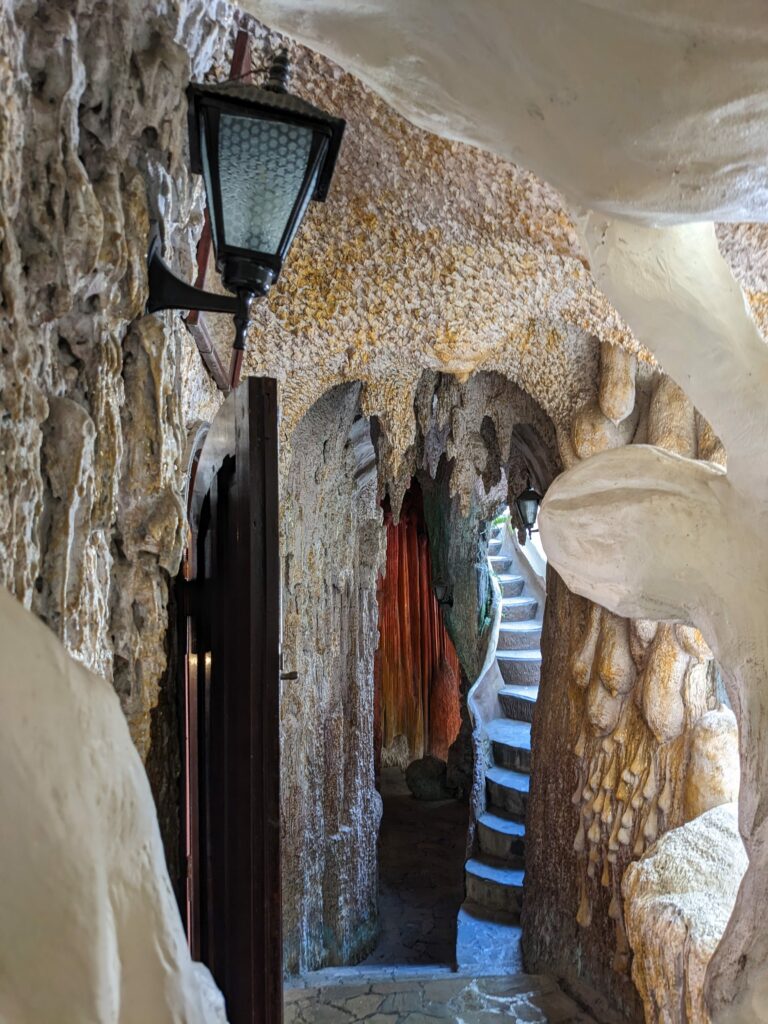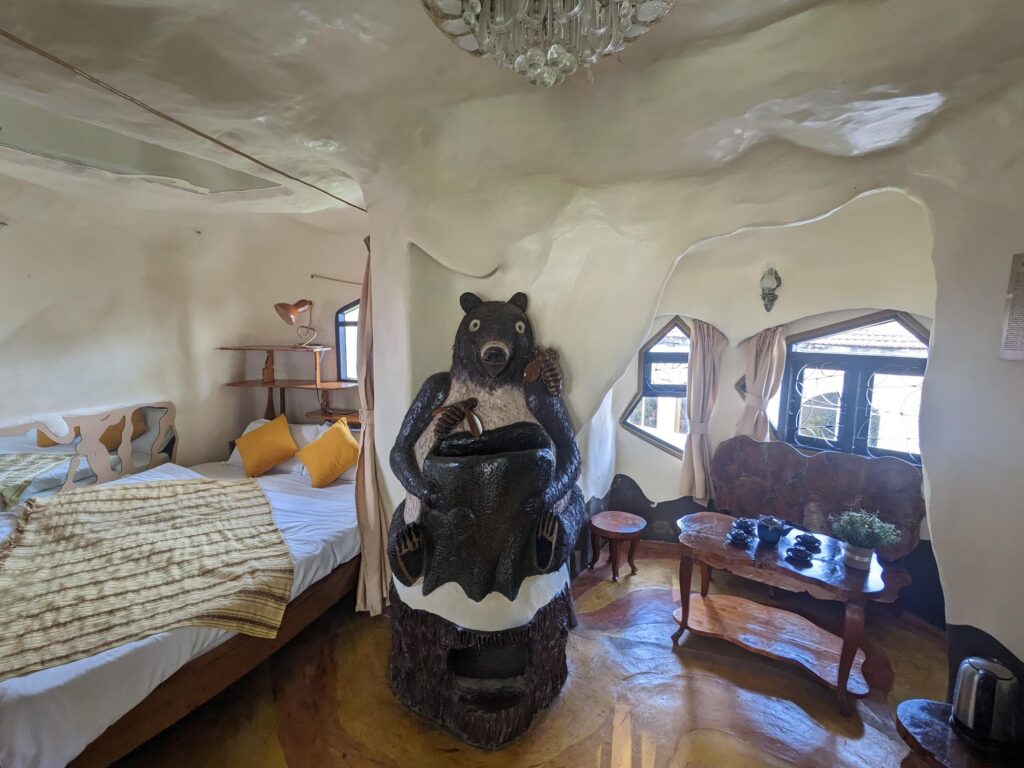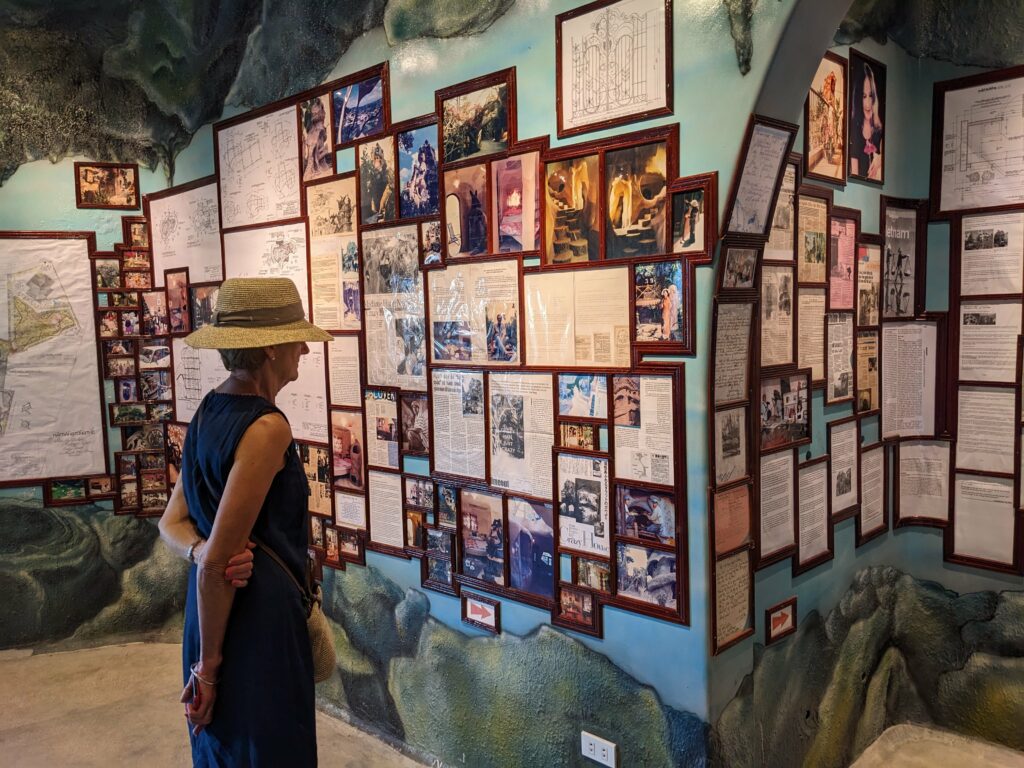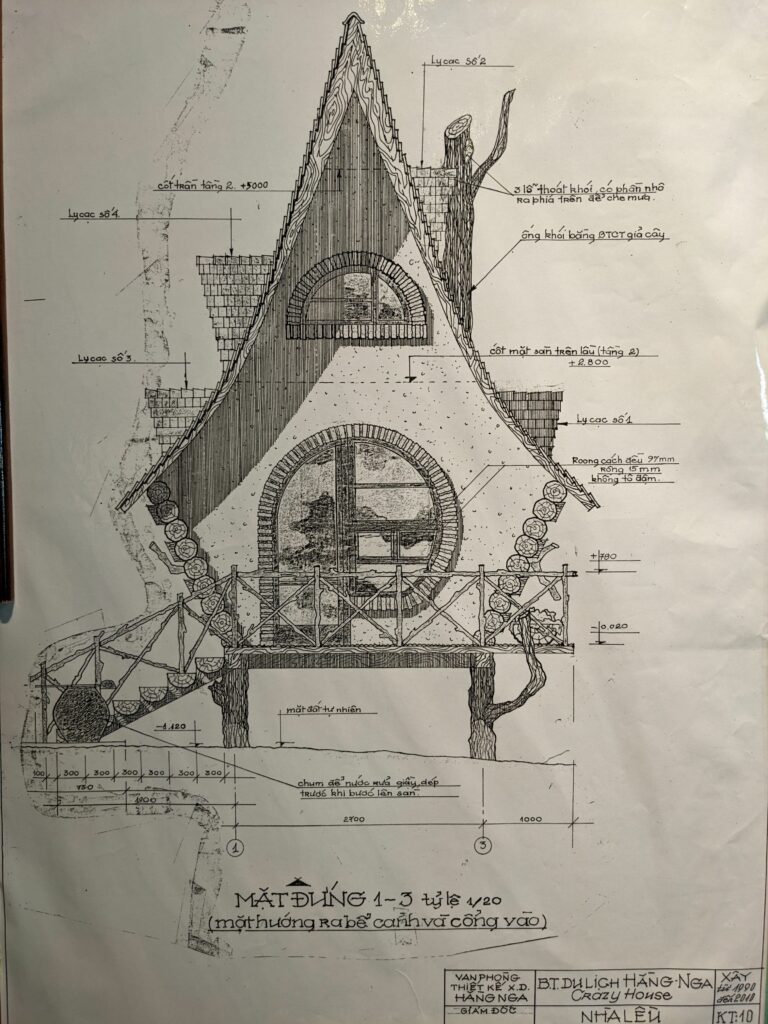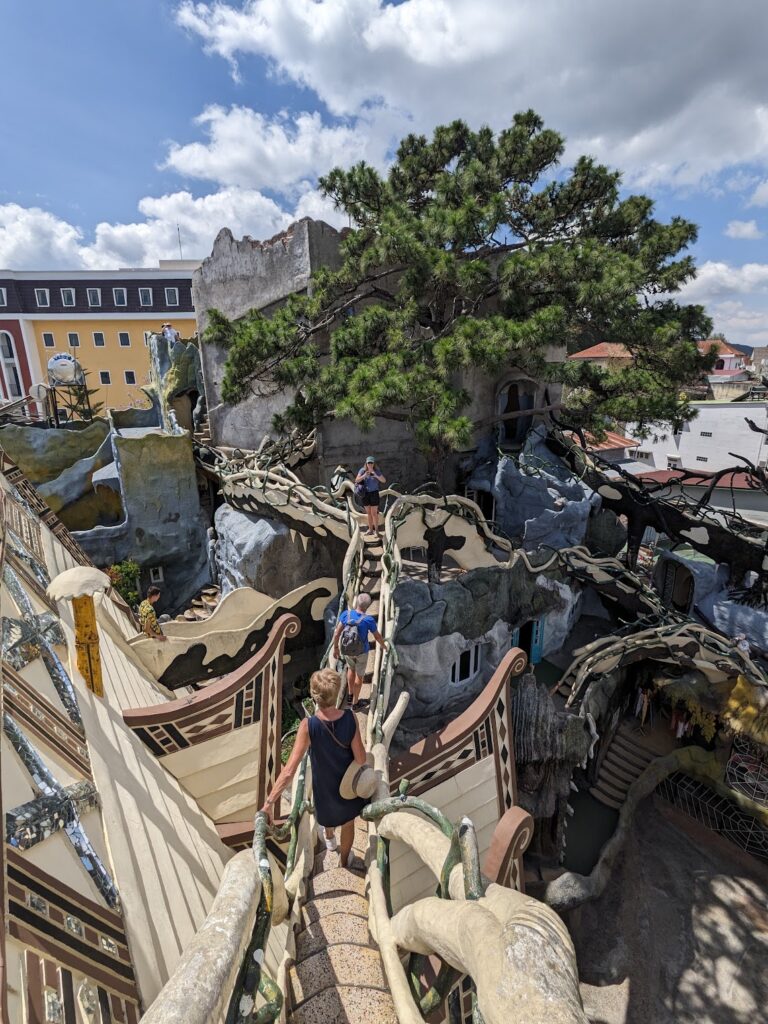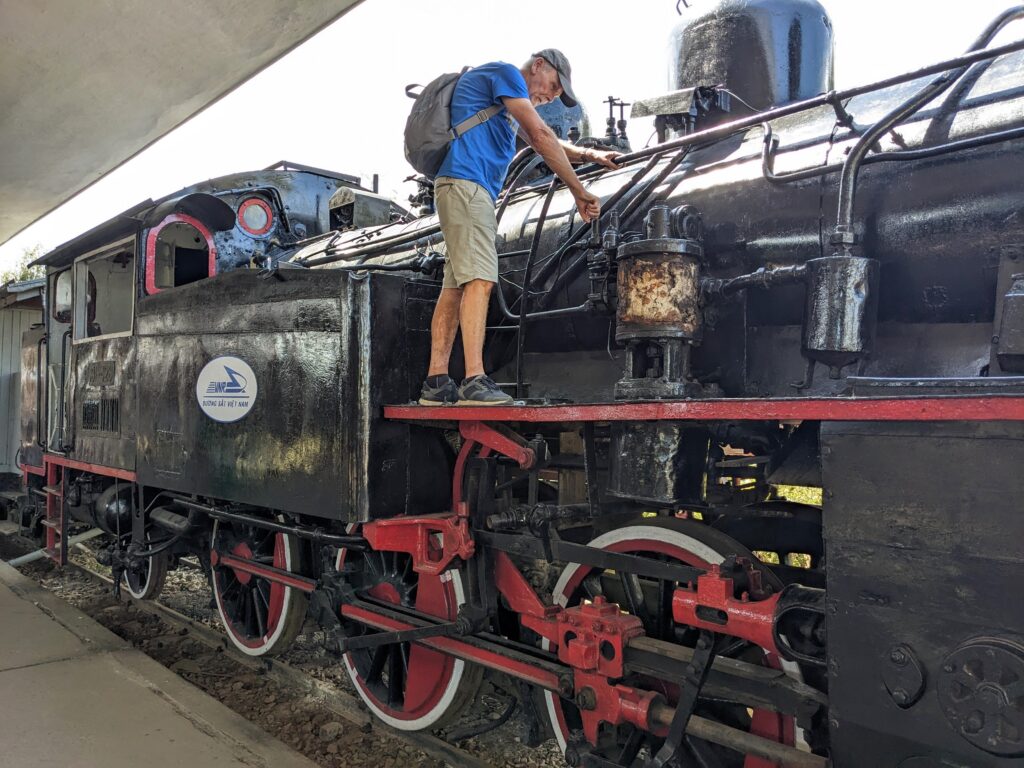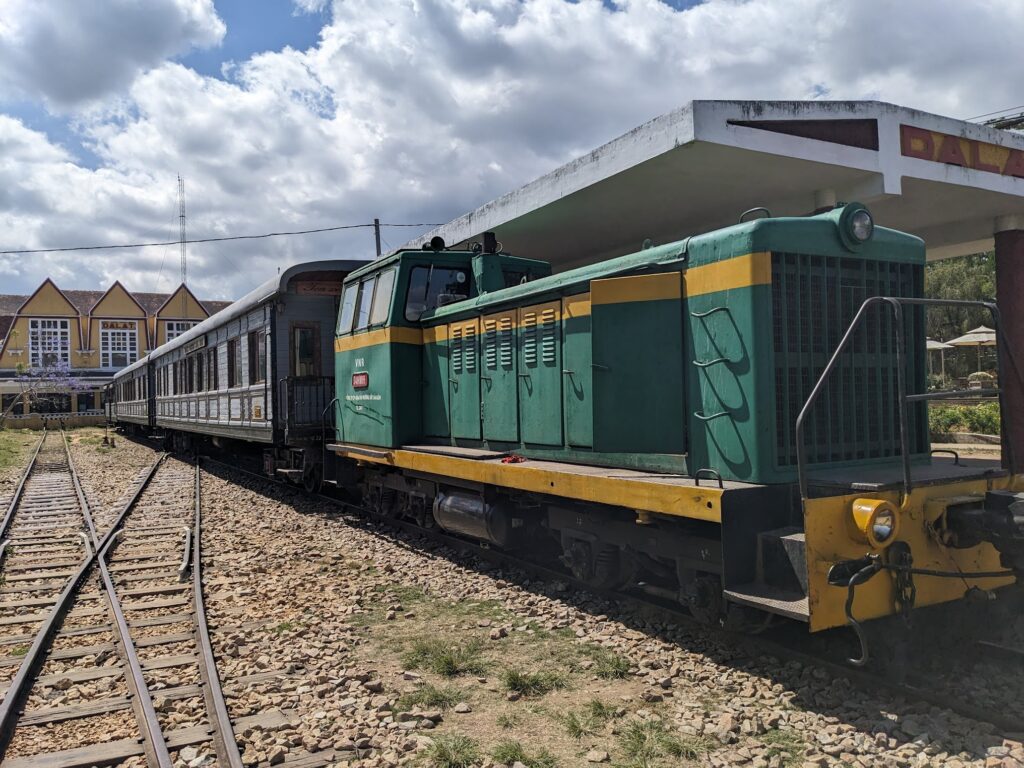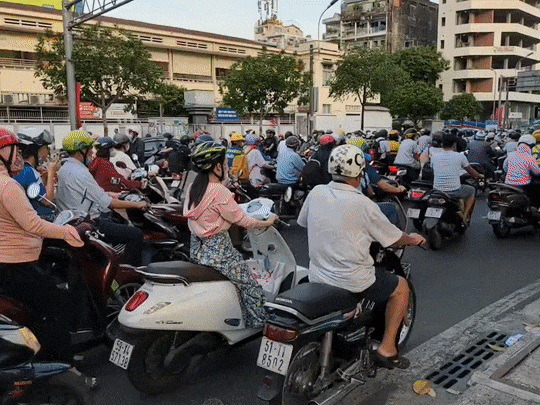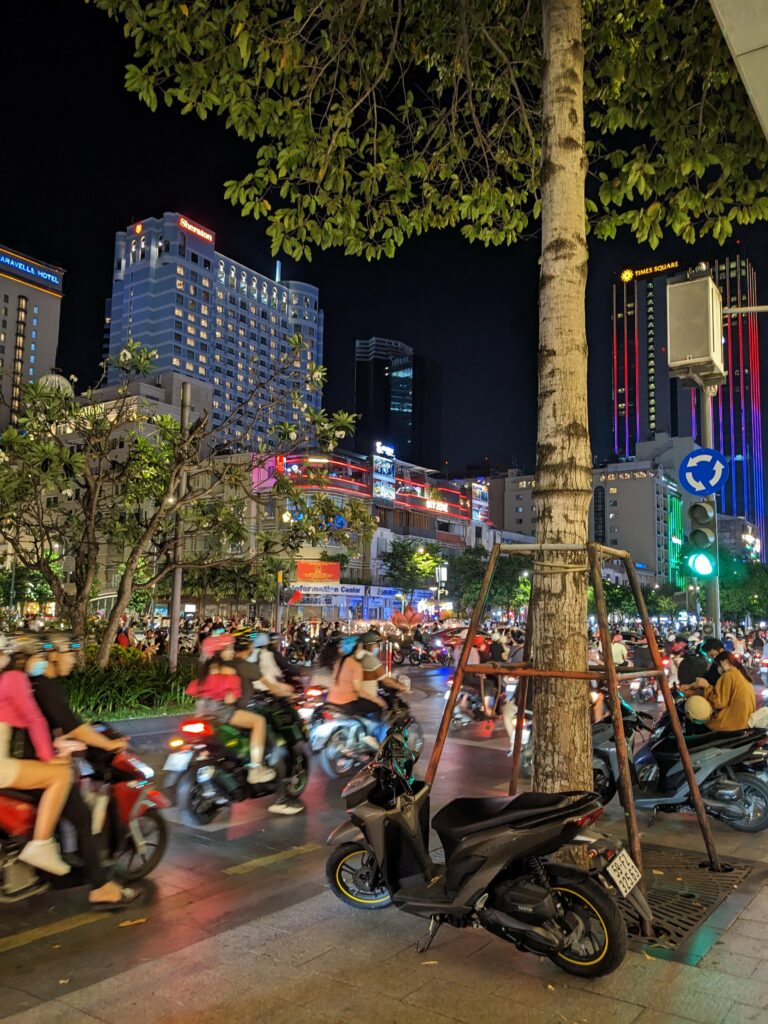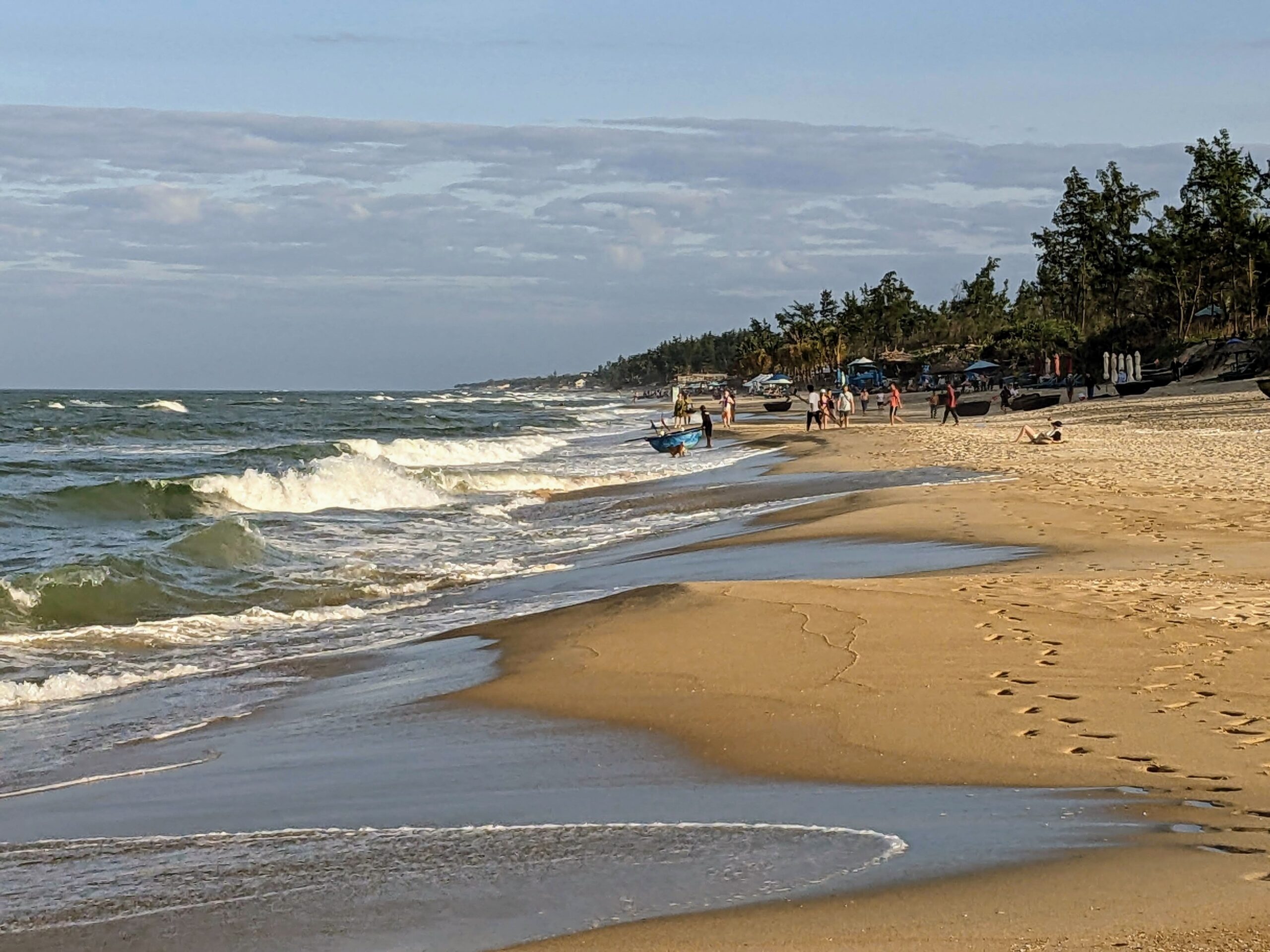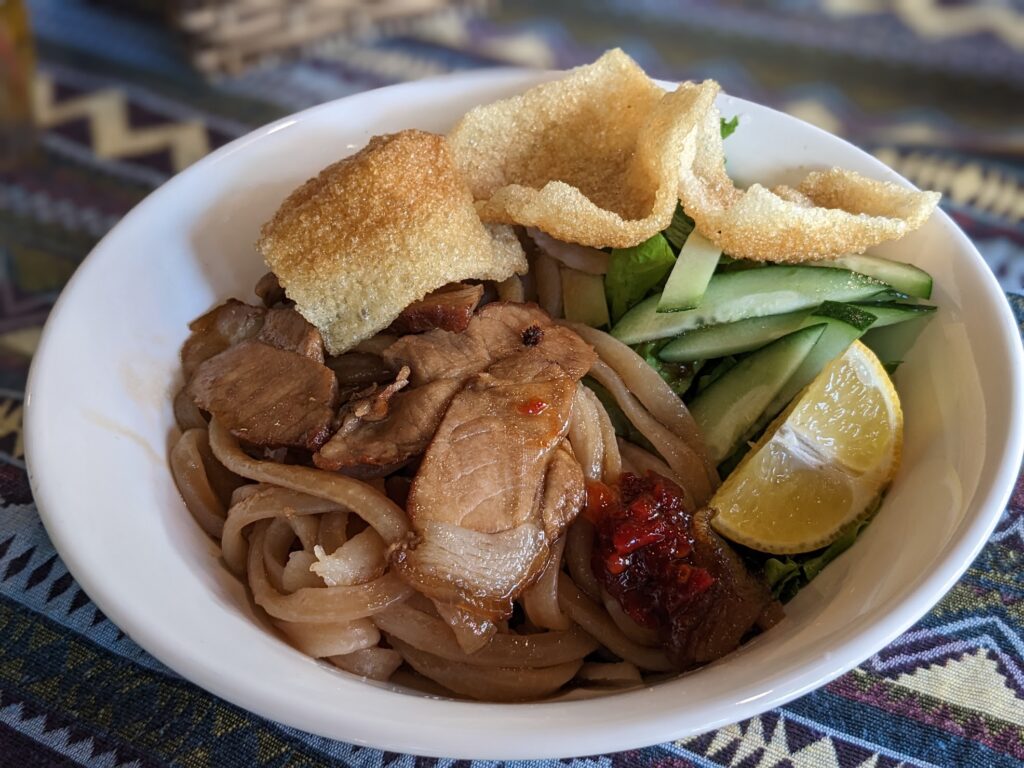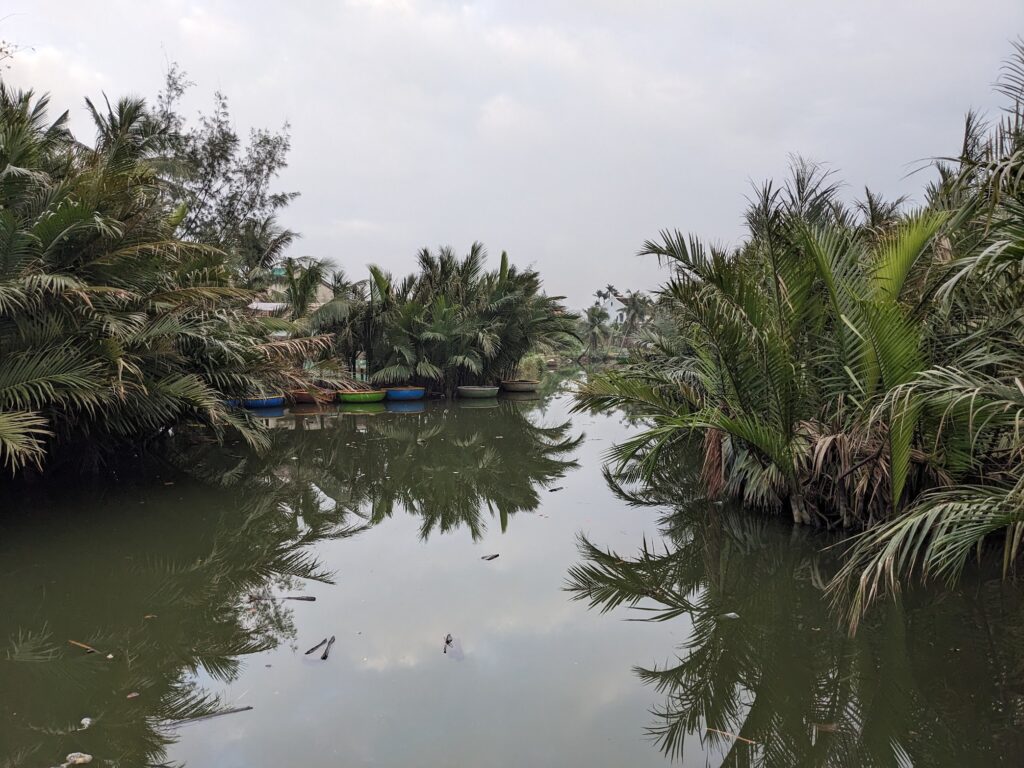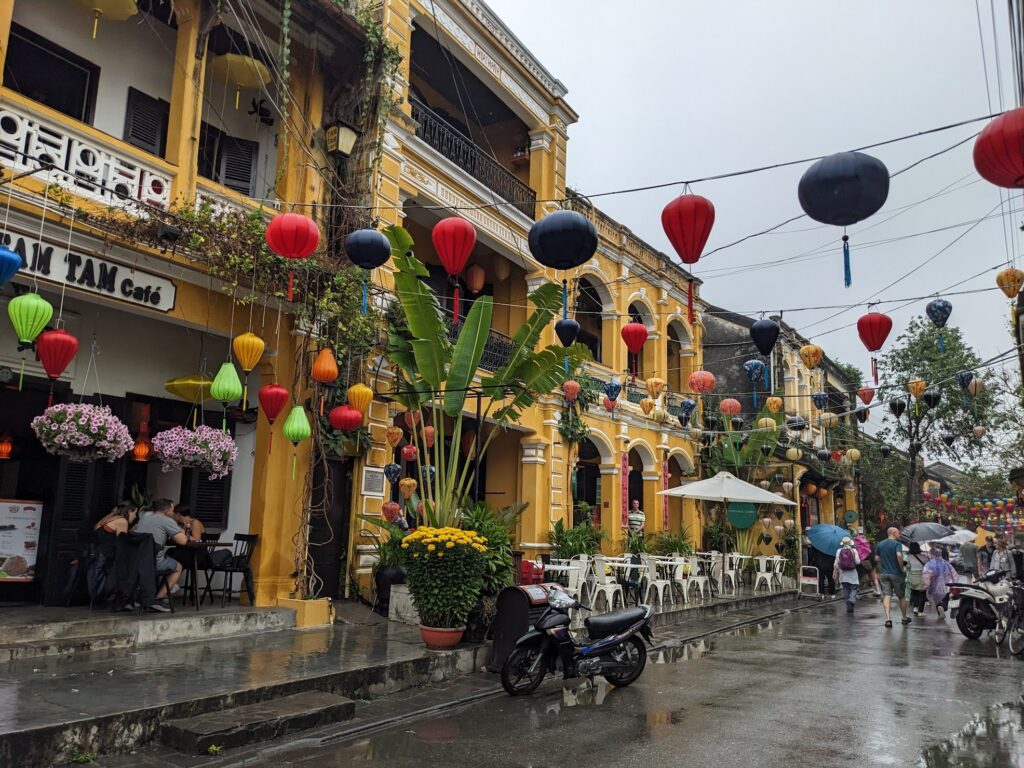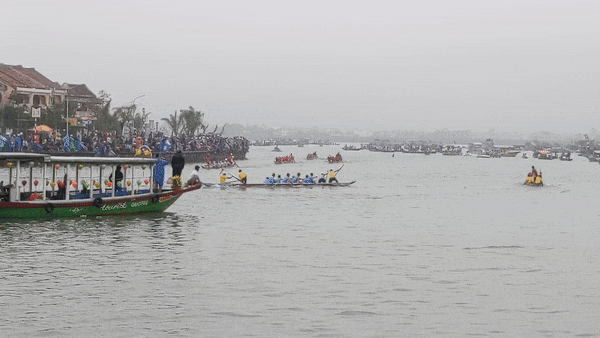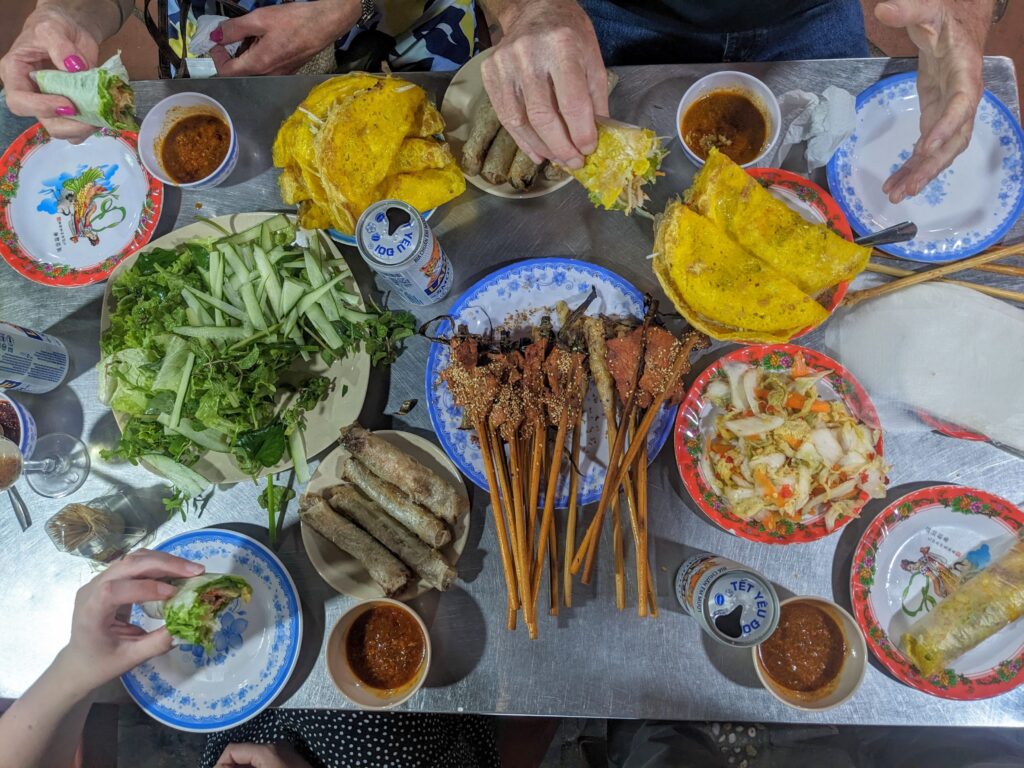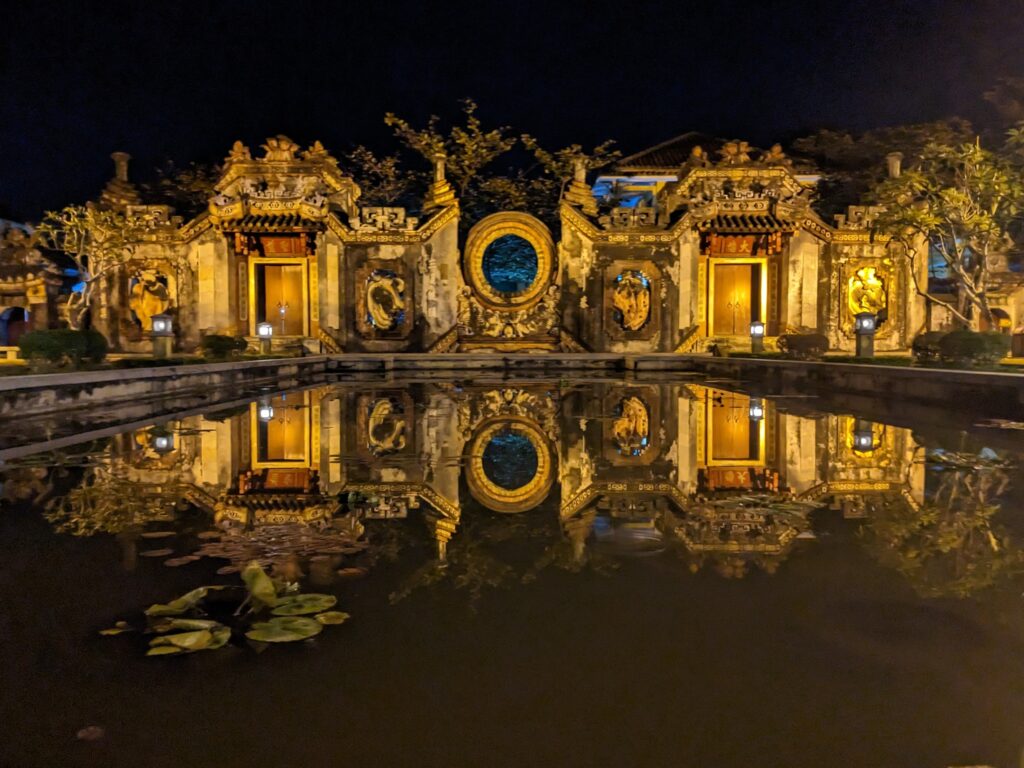After a couple of days eating all the Cao lầu we could lay our hands on in An Bàng, we were on the road again and heading south towards Đà Lạt, an old hill station in the Central Highlands of Vietnam. It was a long journey (more than 700 km), so it was time for another Top Gear race!
🐢 Team Tortoise (Oli and Sara) opted to take an 9-hour daytime train down the coast to Nha Trang, stop there overnight and then take a further 3.5-hour bus through the mountains to Đà Lạt
🐇 Team Hare (Helen and Mick) sensibly chose to take a quick 45-minute flight from Đà Nẵng to Đà Lạt on Vietnam Airlines
The race was on!
| Team Hare 🐇 | Team Tortoise 🐢 | |
| Time | 5 hours | 25 hours (inc. 7-hour stopover in a hotel in Nha Trang) |
| Cost | £85.50 | £81.76 |
| Carbon | 240 kgCO2e | 49 kgCO2e |
Verdict: I think it’s fair to say that if carbon wasn’t a consideration, Team 🐇’s route was the winner. The cost was practically identical, but the journey took Team 🐢 more than four times as long. However, Team 🐇 did emit nearly five times as much carbon as Team 🐢! They also missed out on some truly beautiful countryside views from the train and didn’t get to ride on a sleeper bus (which we found unexpectedly exciting, although I’m not sure I’d actually want to spend a night on one…)

When we finally arrived, we were rewarded with some of the loveliest accommodation on our entire trip. Đà Lạt was built as a hill station for the French colonialists to escape the heat of Vietnamese summers, and we stayed on a beautiful estate in one of the original villas built during the 1920s or 1930s. The villas have been entirely (but very convincingly) restyled now, and even appeared in Architectural Digest when the resort first reopened in 2009! I later read that Đà Lạt is the Vietnamese capital for honeymoons, which made total sense – our hotel in particular really had that feel. I also read that there’s a widespread belief that if you visit Đà Lạt with your partner, you will break up. I’m not sure how these two co-exist – I like to think that all the newlyweds who visit Đà Lạt don’t have time for such superstition. Let’s hope they are right!


With only one full day in Đà Lạt, there wasn’t much time to laze by the pool as we had a list of offbeat attractions to visit, the first of which was appropriately named the Crazy House. Built by a Đặng Việt Nga, an architect who had studied in Moscow, it is a constant work in progress, with bits being added and transformed all the time. Part hotel, part house and part museum, with animal-themed rooms and a whole section built to look like it was under the sea, I’ve never seen anything quite like it! We attempted to follow a QR code walking tour but almost immediately lost the trail, so instead poked around by ourselves and met other people who were also lost and had been for some time! Our exploration culminated in a climb over a frankly-quite-alarming walkway that soared above the eaves and gave spectacular views of the city and surrounding mountains, as well as a brilliant view of just how far we’d fall if we lost our balance, since the handrails were rather lower than we would have preferred 😬
Our second stop was at Đà Lạt Railway Station, a beautiful art-deco style building that was constructed by the French in 1938.

Oli got very excited learning about the cog railway that used to connect Đà Lạt to the coast, so I’ll hand over to him for this part.
Đà Lạt used to be connected to the North-South mainline by steam train, which required 34 km of rack-railway to cover the 1,400m of elevation gain through the mountains, featuring a maximum incline of 12%! However, the railway was repeatedly attacked during the Vietnam-American War, and was partially dismantled after the war to use the parts for repairs to the North-South line. Most recently, plans have been made to restore the connection to the North-South line by 2030, once again allowing trains from Hanoi to run all the way to Đà Lạt. This would have been a faster and even more spectacular alternative to our train and bus combo, and would likely have convinced Mick & Helen out of flying this leg of the journey!
Oli
Meanwhile, Dad was busy climbing all over the trains that sat in the station. Mum and I were mainly searching for a cafe that would do us a nice cold drink!
There was so much more to Đà Lạt that we didn’t get a chance to visit on our all-too-brief stopover, including the pretty central lake that we passed briefly a couple of times (complete with swan pedalos that I was desperate to get Dad on), the Cát Tiên National Park (with elephants and gibbons) and even a winery (although I did try the wine elsewhere and it was…interesting)! But for now, we were adding our lovely hotel to our to-revisit-one-day list and were heading south to the happy chaos of Saigon.
